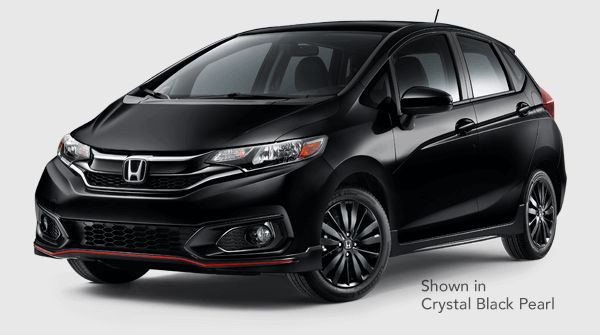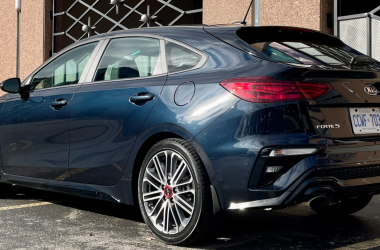The Honda Fit is a subcompact car that was introduced in the United States in 2007 (US News). The 2020 model year was the last year the Fit was available in the U.S., although it continues to be sold in other markets (Forbes). The Fit comes in multiple trim levels, with the Sport and Touring being two of the higher trims. The Sport and Touring offer increased features and options compared to the base LX model, and they serve as the more premium versions of the Fit subcompact car.
Exterior Differences
The Honda Fit Sport and Touring trims have some notable differences when it comes to exterior styling and features. The Sport trim has a more aggressive body design with a front spoiler and side sill extensions giving it a sportier look (Reddit). The Sport rides on unique 16-inch alloy wheels compared to the 15-inch wheels on the base model. The Touring trim has additional chrome accents on the door handles, grille, and rear bumper which give it a more upscale appearance.
The biggest distinction comes down to the Sport having a sportier, edgier look while the Touring aims for more elegance and refinement in its exterior styling. For those wanting a hatchback with some attitude, the Fit Sport emphasizes that with its aggressive body extensions and larger wheels. Buyers focused on luxury will appreciate the chrome detailing and overall refinement of the Touring model (FitFreak Forums). So while both look unmistakably like a Honda Fit, the Sport and Touring manage to convey two different flavors through their exterior designs.
Interior Differences
The biggest interior differences between the Honda Fit Sport and Touring trims are in the materials and overall styling.
The Fit Sport keeps things sporty with a black fabric interior with red stitching on the seats and steering wheel. The front seats are also more aggressively bolstered to hold you in place during spirited driving (Source).
In contrast, the Honda Fit Touring has a more luxurious interior with leatherette seats, door inserts, and steering wheel. The wider and plusher seats are designed more for comfort than performance. The Touring also includes wood-like interior accents for an upscale feel (Source).
Both trims have a 7-inch touchscreen display, but the Touring adds an 8-speaker audio system versus 4 speakers in the Sport. Overall, the Sport prioritizes a sporty vibe, while the Touring provides more luxury and comfort features.
Infotainment
Both the Fit Sport and Touring trims come equipped with a 7-inch touchscreen display for the infotainment system. This allows the driver to access audio, Bluetooth, and smartphone integration features. Sources indicate the base system is intuitive and responsive to use (“2016 Honda Fit Interior Photos,” CarBuzz).
However, the Touring trim adds integrated navigation to the infotainment system. This provides turn-by-turn directions and traffic information to help drivers navigate to their destination more easily. The navigation can be useful for drivers unfamiliar with an area or trying to avoid heavy traffic (“Honda fit infotainment system installation,” Instagram). So the main infotainment difference is that navigation comes standard on the Touring but not the Sport.
Performance
The Honda Fit Sport and Touring trims share the same engine options. Both are powered by a 1.5-liter 4-cylinder engine producing 130 horsepower and 114 pound-feet of torque (U.S. News). This engine can be paired with either a 6-speed manual transmission or a continuously variable automatic transmission (CVT).
While the engines are identical, the Sport trim is tuned for better handling and a slightly sportier drive. It features a firmer suspension, tighter steering, and paddle shifters for the CVT. This allows drivers to manually shift through simulated gear ratios for a more engaging experience (KamiSpeed).
The Touring trim gains Honda’s adaptive cruise control system, which automatically adjusts the vehicle’s speed to maintain a set following distance from cars ahead. This adds a degree of convenience on long highway drives.
Fuel Economy
The Honda Fit Sport and Touring models have very similar fuel economy ratings. According to Fuelly, real-world testing shows the Honda Fit averages around 33 mpg combined for both the Sport and Touring trims. Specifically, Fuelly users reported an average of 33.8 mpg across all model years of the Honda Fit. Since the powertrains are nearly identical between the Sport and Touring, their fuel efficiency is quite comparable in real-world driving conditions.
The EPA estimates for the 2020 Honda Fit also show minimal differences between the two trims. The Sport is rated at 33 mpg city, 40 highway, 36 combined. The Touring achieves an EPA rating of 32 mpg city, 36 highway, 34 combined. Overall, buyers can expect excellent fuel economy from both the Sport and Touring models, with combined mpg in the low-to-mid 30s.
Safety Features
The Honda Fit Sport and Touring trims differ in their active safety features. According to VehicleHistory.com, the 2020 Honda Fit received high safety ratings from the NHTSA and IIHS. Both the Sport and Touring come standard with Honda Sensing, which includesCollision Mitigation Braking System, Road Departure Mitigation System, Lane Keeping Assist System, and Adaptive Cruise Control.
However, the Touring trim adds additional active safety features like Blind Spot Information System and Cross Traffic Monitor. The Touring also comes with front and rear parking sensors while the Sport only has rear parking sensors. Overall, the Touring provides more advanced driver assistance and collision avoidance technologies than the Sport trim.
Cargo Space
Both the Honda Fit Sport and Touring models come with fold-down rear seats to expand cargo capacity when needed. According to research from Battison Honda (https://www.battisonhonda.com/blog/2020-honda-fit-cargo-space-and-interior-dimensions/), the 2020 Honda Fit has 16.6 cubic feet of cargo space behind the second row. With the rear seats folded down, that expands to 52.7 cubic feet of maximum cargo volume.
MotorTrend (https://www.motortrend.com/features/12-hatchbacks-cargo-space/) confirms these cargo dimensions, listing the Honda Fit as having 16.6 cu. ft. behind the second row and 52.7 cu. ft. with the seats folded. So in terms of cargo versatility, the Sport and Touring models are identical, giving owners the flexibility to haul both passengers and larger items when needed.
Pricing
The Honda Fit Sport trim starts at a lower MSRP than the Touring trim. According to Kelley Blue Book, the 2020 Honda Fit Sport has a Fair Purchase Price range of $17,945 – $18,945 (1). In comparison, the 2020 Honda Fit Touring has a slightly higher Fair Purchase Price range of $19,312 – $20,312 (1).
When examining the pricing walkthrough for Honda Fit trims, the base LX model starts at an MSRP of $16,190 (1). Stepping up to the Sport adds features like a moonroof, fog lights, and paddle shifters for an MSRP of $18,860 (1). The EX trim includes amenities like Honda Sensing and push button start for an MSRP of $20,420 (1). Finally, the top Touring trim starts at $22,550 and adds leather seats, navigation, and satellite radio (1).
Overall, buyers should expect to pay around $2,500 more for a fully loaded Honda Fit Touring versus a mid-level Sport model (1). The Touring does add several premium features and tech, but the Sport still provides excellent value at a lower price point.
(1) https://www.kbb.com/honda/fit/2020/, Kelley Blue Book
Verdict
The main differences between the Honda Fit Sport and Touring trims come down to features and styling. The Sport has a more aggressive look with its body kit, rear spoiler, and 17″ alloy wheels compared to the 16″ wheels on the Touring. The Touring’s interior is more refined with leather upholstery and chrome accents versus the Sport’s sportier cloth seats. The Touring also has more tech like the Honda Sensing safety suite, navigation, and a premium audio system.
For most buyers, we recommend going with the Touring trim if you can afford it. You get all of the Sport’s performance and handling upgrades plus more luxury and tech features. However, if you’re looking for more of a sporty look and don’t care as much about the extras, the Fit Sport provides great value and is still very well-equipped. Those focused on safety will appreciate Honda Sensing standard on the Touring. Overall the Touring trim adds more refinement and daily driver comforts to the Fit’s fun-to-drive nature.





